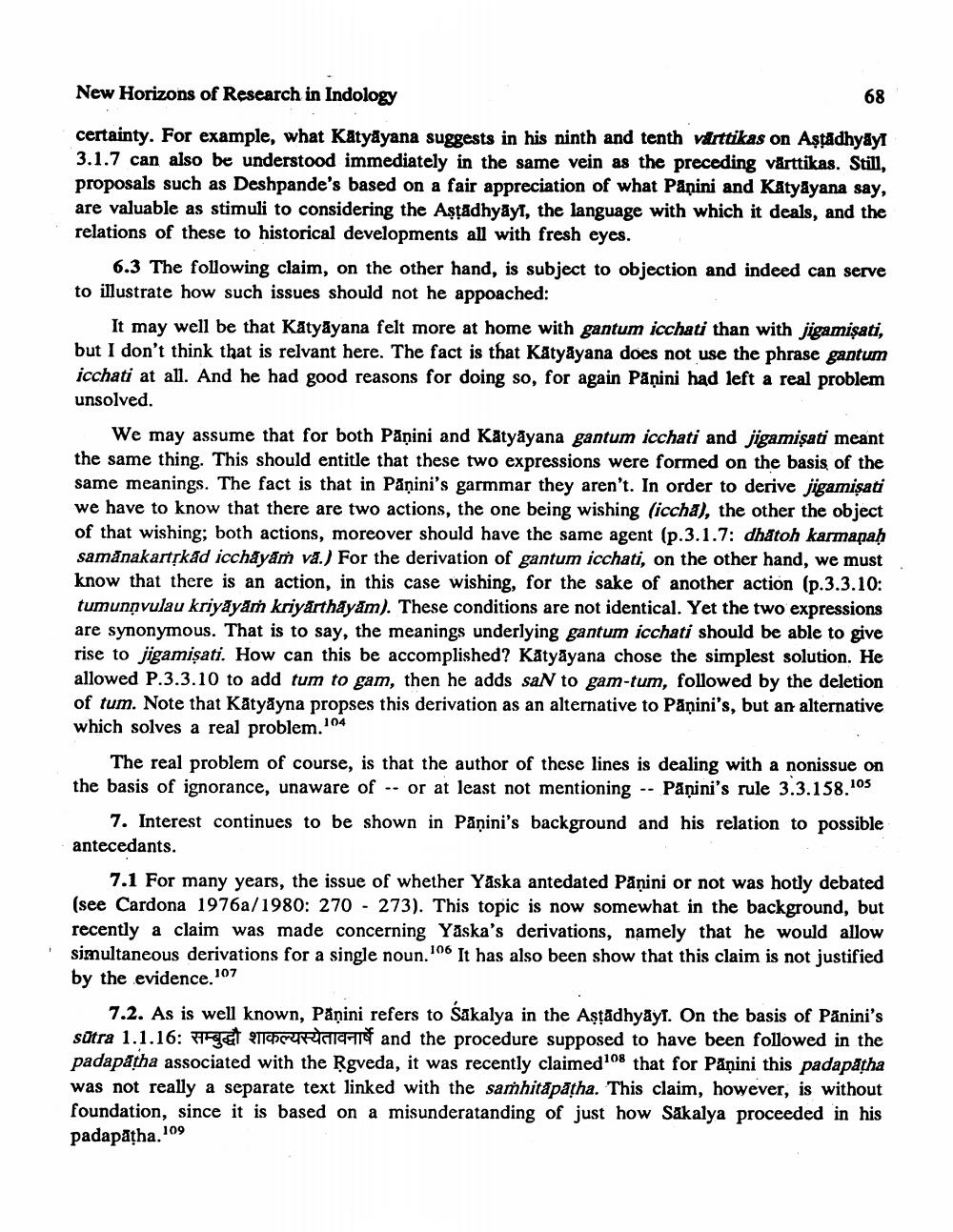________________
New Horizons of Research in Indology
68
certainty. For example, what Katyayana suggests in his ninth and tenth varttikas on Aştädhyay 3.1.7 can also be understood immediately in the same vein as the preceding värttikas. Still, proposals such as Deshpande's based on a fair appreciation of what Panini and Katyāyana say, are valuable as stimuli to considering the Astådhyāyt, the language with which it deals, and the relations of these to historical developments all with fresh eyes.
6.3 The following claim, on the other hand, is subject to objection and indeed can serve to illustrate how such issues should not he appoached:
It may well be that Katyāyana felt more at home with gantum icchati than with jigamișati, but I don't think that is relvant here. The fact is that Katyāyana does not use the phrase gantum icchati at all. And he had good reasons for doing so, for again Paņini had left a real problem unsolved.
We may assume that for both Pāṇini and Katyāyana gantum icchati and jigamisati meant the same thing. This should entitle that these two expressions were formed on the basis of the same meanings. The fact is that in Pāṇini's garmmar they aren't. In order to derive jigamisati we have to know that there are two actions, the one being wishing (iccha), the other the object of that wishing; both actions, moreover should have the same agent (p.3.1.7: dhatoh karmapaḥ samanakartȚkad icchayam va.) For the derivation of gantum icchati, on the other hand, we must know that there is an action, in this case wishing, for the sake of another action (p.3.3.10: tumunņvulau kriyāyām kriyarthayam). These conditions are not identical. Yet the two expressions are synonymous. That is to say, the meanings underlying gantum icchati should be able to give rise to jigamisati. How can this be accomplished? Katyāyana chose the simplest solution. He allowed P.3.3.10 to add tum to gam, then he adds saN to gam-tum, followed by the deletion of tum. Note that Katyāyna propses this derivation as an alternative to Pāņini's, but an alternative which solves a real problem.104
The real problem of course, is that the author of these lines is dealing with a nonissue on the basis of ignorance, unaware of -- or at least not mentioning -- Panini's rule 3.3.158.105
7. Interest continues to be shown in Pāṇini's background and his relation to possible antecedants.
7.1 For many years, the issue of whether Yaska antedated Pāṇini or not was hotly debated (see Cardona 1976a/1980: 270 - 273). This topic is now somewhat in the background, but recently a claim was made concerning Yaska's derivations, namely that he would allow simultaneous derivations for a single noun. 106 It has also been show that this claim is not justified by the evidence.107
7.2. As is well known, Pāņini refers to Šakalya in the Aşțădhyäyt. On the basis of Panini's sūtra 1.1.16: Re SCHURIAChlef and the procedure supposed to have been followed in the padapatha associated with the Rgveda, it was recently claimed108 that for Pāṇini this padapatha was not really a separate text linked with the samhitāpātha. This claim, however, is without foundation, since it is based on a misunderatanding of just how Sakalya proceeded in his padapatha.109




